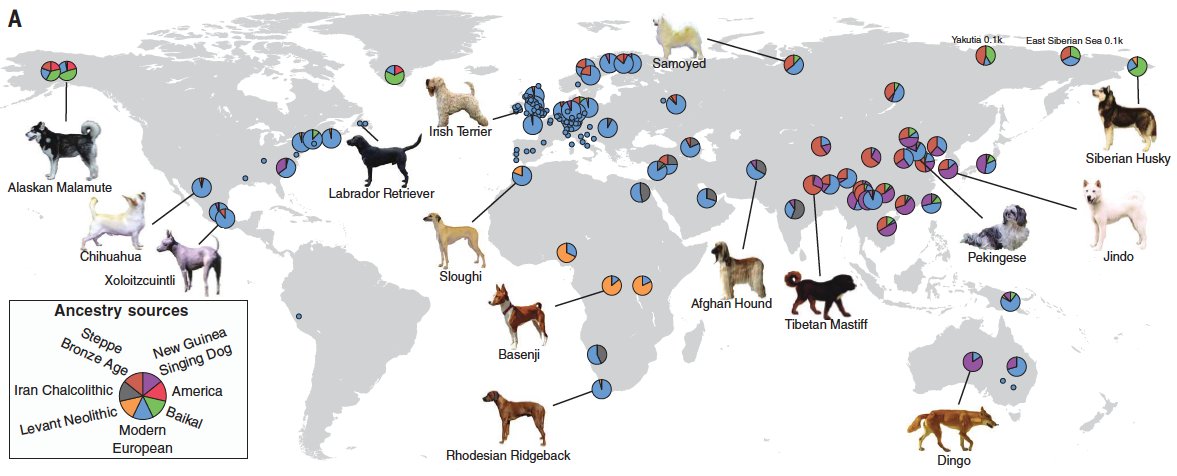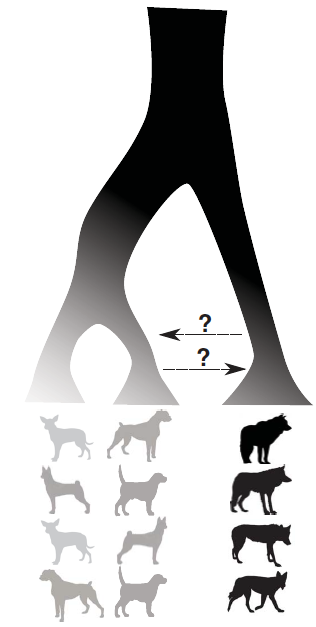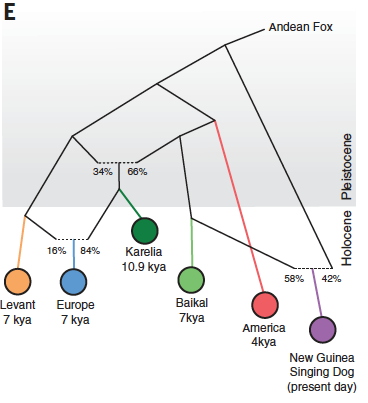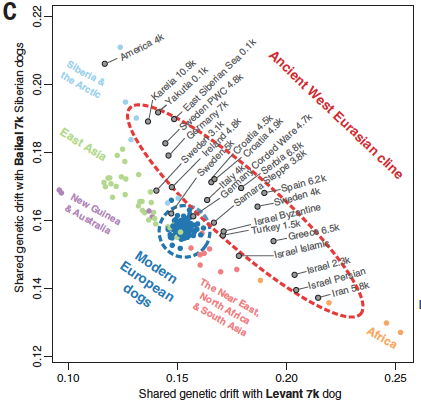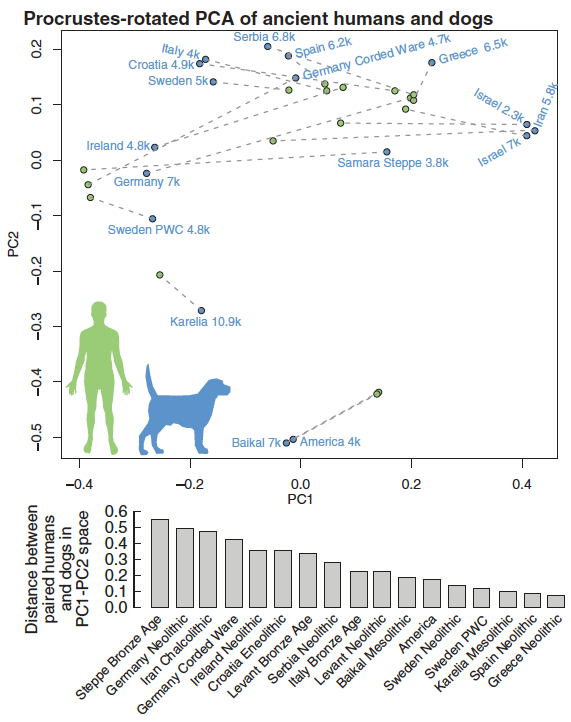In this ancient dog DNA study by Anders Bergström et al., we show that already 11,000 years ago there were ≥5 different dog groups across the world. https://science.sciencemag.org/content/370/6516/557
We">https://science.sciencemag.org/content/3... then trace the history written in dog & human DNA together, through the Holocene to global dogs today.
We">https://science.sciencemag.org/content/3... then trace the history written in dog & human DNA together, through the Holocene to global dogs today.
We see no evidence of multiple origins of dogs with respect to global wolf populations today.
There is no evidence of wolf>dog gene flow, but substantial dog>wolf gene flow. This could suggest that genetics underlying wolf behaviour was difficult to maintain in human societies.
There is no evidence of wolf>dog gene flow, but substantial dog>wolf gene flow. This could suggest that genetics underlying wolf behaviour was difficult to maintain in human societies.
With the great diversity at 11,000 years ago, dog origins must be traced to earlier than that, during the Paleolithic.
However, in our view the geographic region of origin is still unknown, and ancient DNA highlights how this question is hard to resolve with modern variation.
However, in our view the geographic region of origin is still unknown, and ancient DNA highlights how this question is hard to resolve with modern variation.
New dogs came into Europe during the agricultural expansion, meeting previous dogs already there, but a cline of Neolithic dog variation was replaced at some point in the past 4,000 years by a homogenization of ancestry found in European dog breeds today.
We compare the patterns of dog and human ancient DNA, and see hints of different ancestry impacts of steppe dogs in Europe vs East Asia compared to humans, similarities between early Iranian and Levantine dogs not seen in humans, and links between the Levant and African dogs.
This was a team effort with many collaborators in archaeology and ancient DNA from many countries and institutes.
What factors were behind the domestication event itself? Combining archaeological identification of early canids with new ancient DNA techniques might help find out.
What factors were behind the domestication event itself? Combining archaeological identification of early canids with new ancient DNA techniques might help find out.
Thanks to the project including Anders Bergström @Greger_Larson @LrFrantz @FlinkLinus @love_dalen @AndersGother @bigskybioarch @ErikErsmark @ArchaeOphelie & all the others whose accounts I don& #39;t have.

 Read on Twitter
Read on Twitter